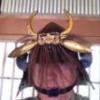-
Posts
14,170 -
Joined
-
Last visited
-
Days Won
266

Bugyotsuji replied to Christian Chaffee's topic in Nihonto

Bugyotsuji replied to Christian Chaffee's topic in Nihonto

Bugyotsuji replied to joe424's topic in Translation Assistance

Bugyotsuji replied to estcrh's topic in General Nihonto Related Discussion

Bugyotsuji replied to estcrh's topic in General Nihonto Related Discussion

Bugyotsuji replied to estcrh's topic in General Nihonto Related Discussion

Bugyotsuji replied to estcrh's topic in General Nihonto Related Discussion

Bugyotsuji replied to estcrh's topic in General Nihonto Related Discussion

Bugyotsuji replied to BIG's topic in Sword Shows, Events, Community News and Legislation Issues

Bugyotsuji replied to Bugyotsuji's topic in General Nihonto Related Discussion

